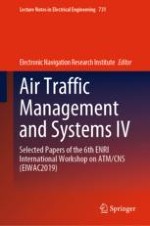This book provides novel concepts and techniques for air traffic management (ATM) and communications, navigation, and surveillance (CNS) systems. The book consists of selected papers from the 6th ENRI International Workshop on ATM/CNS (EIWAC2019) held in Tokyo in October 2019, the theme of which was “Exploring Ideas for World Aviation Challenges”. Included are key topics to realize safer and more efficient skies in the future, linked to the integrated conference theme consisting of long-term visions based on presentations from various fields. The book is dedicated not only to researchers, academicians, and university students, but also to engineers in the industry, air navigation service providers (ANSPs), and regulators of aviation.
